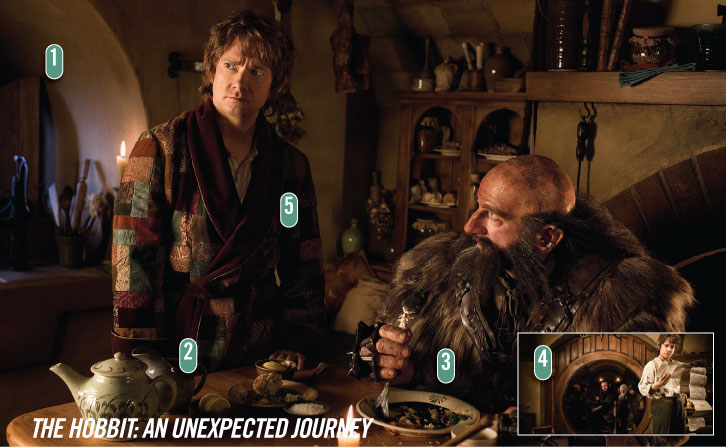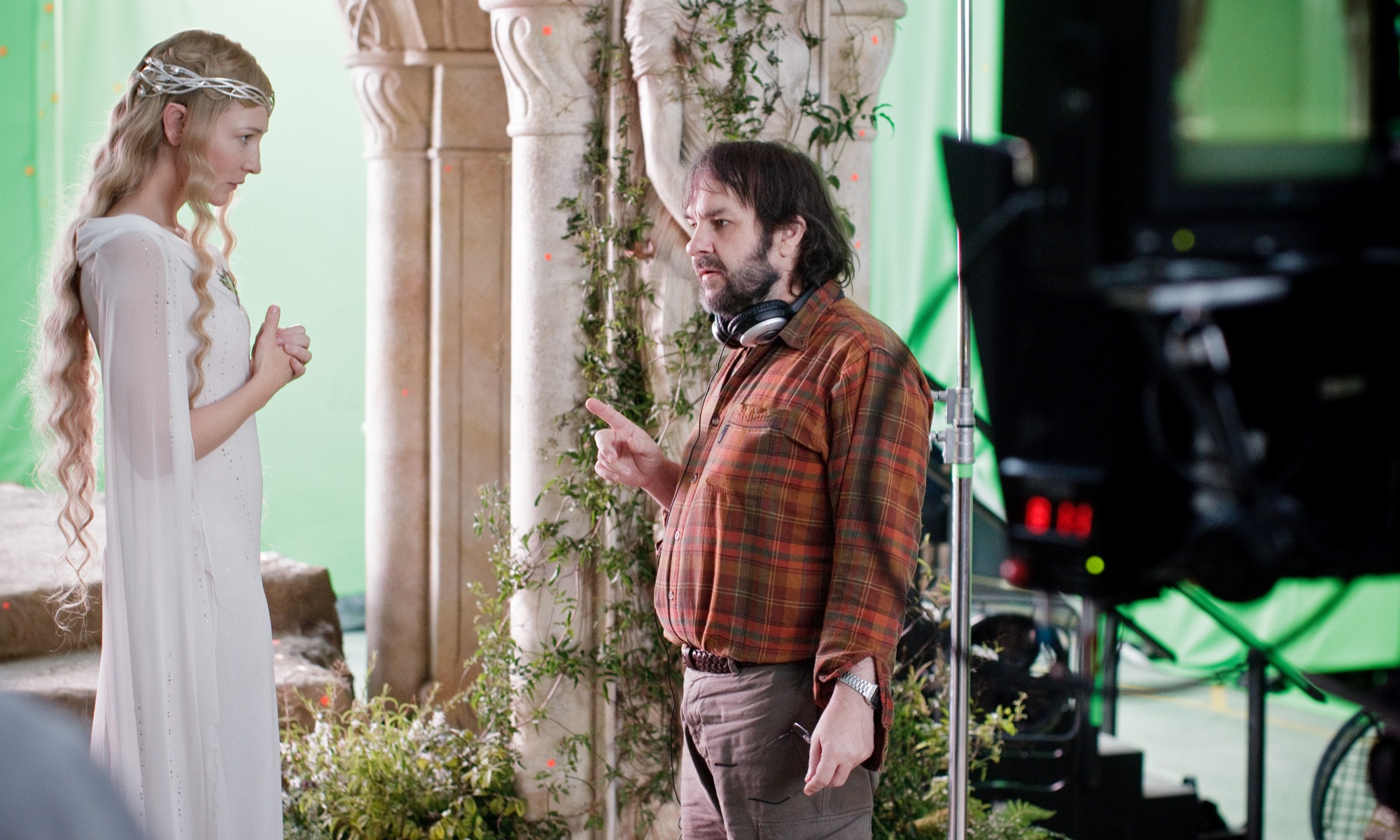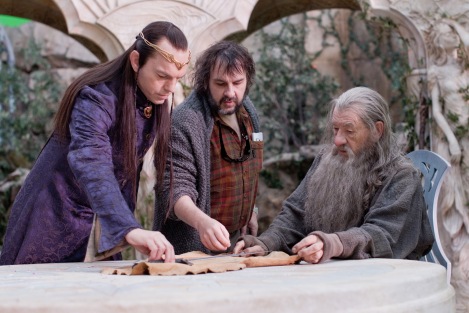Thomas J. McLean is an AwardsLine contributor. This article appeared in the Feb. 13 issue of AwardsLine.
This year’s nominees show how visual effects have spread from summer blockbusters to genres as diverse as superheroes, different flavors of fantasy, more traditional sci-fi territory, and even the art-house film. For each nominee, there’s a moment that makes it worthy of an Oscar nomination. Here, the visual-effects supervisors on the nominated films break down the key challenges and talk about the sequence that clinched the nomination.

The Hobbit: An Unexpected Journey
The nominees: Joe Letteri, Eric Saindon, David Clayton, R. Christopher White
No. of visual-effects shots: 2,176
Tech breakthrough: The complexity and number of techniques used to create the digital creatures. “It’s a combination of lots of things to get a creature to that point,” says Letteri. “It’s muscles, it’s skin, it’s facial capture, it’s performance capture.” All those things had to come together to bring to convincing life six leading digital characters with dialogue.
Defining the aesthetic: “We were grounded in the Middle Earth we had established for The Lord of the Rings,” says Letteri. “For the landscapes and the environments, we wanted to extend that Tolkien-esque feeling, borrowing from what we had on the previous film, trying to keep the same look for Rivendell, for example, but kind of expanding it. Same thing with Gollum—we were trying to keep his same look, but bring him into a new dimension of what we could do 10 years on.”
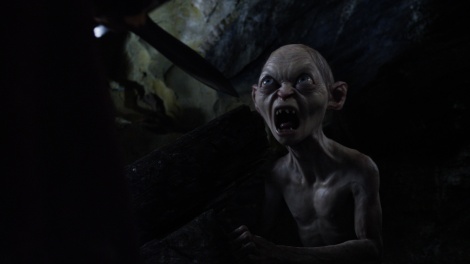
Biggest challenge: The quantity of digital characters. “You’ve got dialogue, you’ve got personalities, you’ve got unique looks,” says Letteri. “You’ve got to have everything working: You’ve got to have the fur working, the eyes, the skin, the muscles, the performances—not only the capture but the animation side.”
The clincher: The confrontation between Martin Freeman’s Bilbo and Gollum, played via motion capture by Andy Serkis. “We all had a bit of nervousness going into creating (Gollum) because we had done him 10 years ago, and we spent so much time in the last 10 years really trying to delve into what makes a performance resonate with an audience,” says Letteri. “You’ve got here a nine-minute dialogue scene with a real character and a digital character, and it’s watchable in a way that keeps you engaged the whole way through.”

Life of Pi
The nominees: Bill Westenhofer, Guillaume Rocheron, Erik-Jan De Boer, Donald R. Elliott
No. of visual-effects shots: 690
Tech breakthrough: Two of the major visual elements were done mostly with digital effects: The water and the tiger. “It was just pushing the bar for the realism of the tiger and the other animals involved, trying to blend water from a tank into CG water in stereo was a challenge,” says Westenhofer.
Defining the aesthetic: Westenhofer describes the look of the effects as “hyper-dreamlike reality.” “It’s a story being told by Pi, so there’s an element of his recollection and the human’s ability to exaggerate when they recollect,” he says. “That allows for a bit of stylization in the amount of color and detail.”
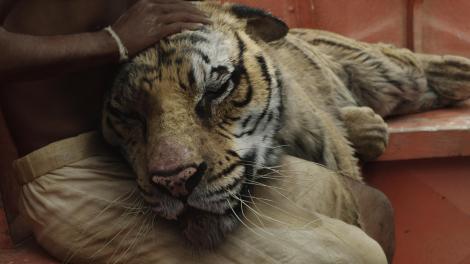
Biggest challenge: It’s a toss-up between the water and the animals. “Fourteen percent of the animals were real and the rest were digital, and we often cut back to back between them, so it forced our hand to make the matches as perfect as possible,” says Westenhofer. “Everything from the moment they set sail to when he lands on the beach, it’s a boy on a boat in front of a blue screen.”
The clincher: A shot where Pi pulls the tiger’s head into his lap and pets it. “We shot him on the boat in a gimbal, and he pulls a blue sock into his lap and he pets the blue sock. And we replaced that with our digital tiger, fitting in the animation to what he did. In stereo, it had to be perfectly precise to line up with everything, and then we had to animate the hair to respond to his hand as it moves back and forth.”
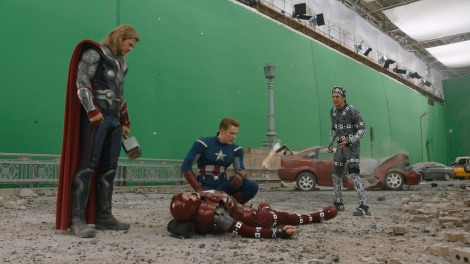
Marvel’s The Avengers
The nominees: Janek Sirrs, Jeff White, Guy Williams, Dan Sudick
No. of visual-effects shots: About 2,200
Tech breakthrough: The Hulk. “We leveraged on previous digital characters we had done, but really had to rebuild and improve the way our characters move, making it incredibly accurate in terms of the way the skeleton under his skin drives his muscles, which then drives his skin,” says White.
Defining the aesthetic: Invisible was
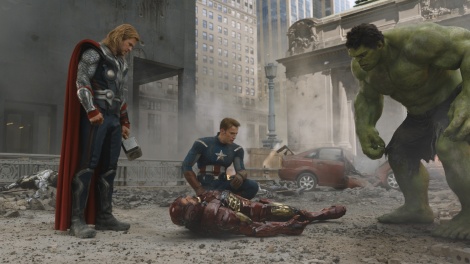
the watchword from director Joss Whedon, a point defined by the final
battle in New York City that was shot almost entirely elsewhere. “Even though very little of the movie is shot
in New York City—some is Cleveland, where we did simpler set extensions, and then a significant portion was shot on a green-screen stage in New Mexico—those are things where we didn’t want the audience to even know there are visual effects,” says White.
Biggest challenge: The Hulk. “There’s a deep ravine to cross there, where it doesn’t look good for quite a long time, and it takes an incredible amount of artistry by the artists working on the shots to make it what it ultimately became,” says White.
The clincher: The climactic battle in New York. White says ILM spent about eight weeks shooting some 2,000 virtual background spheres—extremely high-resolution photographs—from streets and rooftops that were projected onto geography of the city as the basis for the digital city. To this was added the digital aliens and plates of the actors shot, as well as the details required to sell the scene as a full-on battle. “As we put our shots together of, say, Captain America talking to Black Widow, we really wanted to push it toward this feeling of being in the center of a battle. So in every shot we added additional smoke and dust and little embers going through the scene, just trying to really capture that feel of being in the middle of a disaster.”
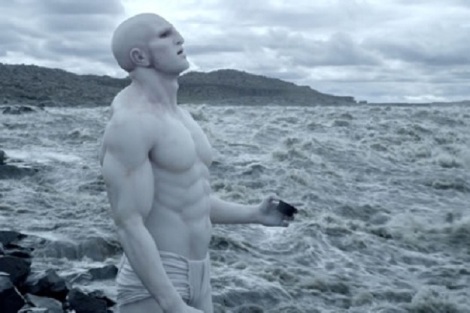
The nominees: Richard Stammers, Trevor Wood, Charley Henley, Martin Hill
No. of visual-effects shots: 1,284
Tech breakthrough: The specific look director Ridley Scott wanted for the alien creatures required redeveloping some commonly used tools. “We had to do a lot of work to really develop our subsurface scatter lighting technique to get that deep translucency that matched the prosthetics we were using live on set,” says Stammers.
Defining the aesthetic: The look of the alien landscape of LV-223 defined the look of the whole film and was something Scott was quite passionate about. “What we ended up with is this montage of two landscapes that he really liked. And then beyond that, we added additional mountains and sky that was very full of fast-moving clouds, and so you get a sense of constantly fast-moving layers of clouds and bad weather, (then) we could paint the landscape with fast-moving patches of sunlight.”
Biggest challenge: Stammers says the production only had three days to shoot all the references needed at Wadi Rum, Jordan, requiring an incredibly detailed plan. “We planned it out based on our Google Earth map of the location to the point where, for every take that we needed to shoot, we had a helicopter plan of altitude and GPS start and end point, so that we could go to each of the specific points and film the elements we needed in order to map out the terrain and texture it.”
The clincher: Everything came together in the shot of the Prometheus landing on LV-223. “We spent somewhere in the region of 300 or 400 days just on the texture work alone, just to get the level of detail we needed to sell the scale of it,” says Stammers. “All the elements come together in that one shot that we see throughout the rest of the film as well.”

The nominees: Cedric Nicolas-Troyan, Philip Brennan, Neil Corbould, Michael Dawson
No. of visual-effects shots: About 1,400
Tech breakthrough: The extensive use of macrophotography in CG visual effects. “It’s very tricky to do macrophotography in a full CG shot, especially when you look at an animal or something close up like that, close up on the eye,” says Nicolas-Troyan. “That’s something that people don’t really realize when they see the movie, but if you pay attention you see there’s a lot of macro shots.”
Defining the aesthetic: Director Rupert Sanders set a distinct tone that required all the visual effects to be based in reality but juxtaposed with unusual situations or actions. “Everything is based on things that exist in the world,” says Nicolas-Troyan. “They might not be in the same place in the world, so we put them all together in this one spot, but they all do exist.”
Biggest challenge: Finding a way to make eight actors appear as dwarves on schedule and on budget. “We were always going to pick the right technique and the most efficient technique for the shot,” says Brennan. “That goes all the way from old-school in-camera tricks to using risers to vary the heights of people, working with prosthetics and costumes to make people appear a little bit different, all the way up to very complex effects like head and face replacements.”
The clincher: The pursuit through the Enchanted Forest, which encompassed all the techniques used in the movie. “Something like 70 percent or 80 percent of the animals that we created for the movie are in that scene, and they are everywhere,” says Nicolas-Troyan. “There’s birds, plants, and then within those scenes you have the dwarves, so we had to use pretty much all our techniques for the dwarves.”


